Are you looking to transform your business ideas into a reality? Crafting a compelling business innovation proposal is key to capturing the attention of stakeholders and demonstrating the potential for success. In this article, we'll break down the essential components of a persuasive proposal letter that not only outlines your vision but also engages your audience. So, let's dive in and discover how you can effectively present your innovative ideas!

Subject Line Optimization
Subject lines play a critical role in the effectiveness of business communication, particularly in innovation proposal letters. An optimized subject line should be concise, informative, and compelling. Research shows that subject lines with around six to ten words achieve a higher open rate, often exceeding 20%. Personalization, such as including the recipient's name or company name, can enhance engagement. Phrasing that indicates value, urgency, or solution-oriented outcomes, like "Boost Efficiency with Our Latest Innovation," tends to attract attention quickly. Additionally, avoiding spammy phrases and excessive capitalization improves deliverability to ensure the message reaches its intended audience, especially in corporate email environments.
Clear Objective Statement
A clear objective statement outlines the primary intention of a business innovation proposal, emphasizing the desired outcome and benefits to the organization. For instance, the aim might involve enhancing operational efficiency by implementing a cutting-edge technology solution, leading to a projected 30% reduction in production costs within the next fiscal year. This statement should align with the company's strategic goals, promoting sustainable growth and improved market competitiveness. Incorporating measurable targets, such as increasing customer satisfaction ratings by 15% through innovative product features, solidifies the proposal's validity and appeals to stakeholders seeking tangible outcomes. Additionally, contextualizing the objective within industry trends, such as a shift toward digital transformation, provides relevance and urgency to the proposed innovations.
Unique Value Proposition
A unique value proposition (UVP) clearly defines how a product or service meets customers' needs better than competitors. It emphasizes features, benefits, and target audience. For example, a UVP for a tech startup may state how a new software application streamlines workflows by reducing processing time by 30% compared to traditional methods. Specific metrics (such as user growth rates, customer satisfaction scores, or revenue increase percentages) can further enhance the UVP. Highlighting differentiators like innovative technology, exceptional customer service, or sustainability practices can attract attention. Including case studies or testimonials from early adopters can illustrate real-world impact and strengthen credibility in the competitive business landscape.
Data-Driven Insights
Data-driven insights offer valuable perspectives in business innovation, leveraging analytics to transform decision-making processes. Companies employing advanced analytics tools, such as predictive models and machine learning algorithms, can uncover trends within large datasets, optimizing operational efficiency across various sectors including retail and finance. Key metrics like customer engagement rates and sales conversion statistics reveal opportunities for growth, while data visualization platforms enhance the interpretation of complex information. Implementing these insights allows organizations to tailor strategies that resonate with target audiences, fostering a competitive advantage in the marketplace.
Call to Action
A business innovation proposal serves as a formal request to stakeholders, investors, or management, emphasizing the importance of adopting new strategies or technologies for growth. This document highlights opportunities for improvement, outlines potential benefits, and provides a clear call to action for implementation. Engaging narratives about innovative concepts can increase interest, supported by evidence from industry trends, competitor analysis, and expected ROI (Return on Investment). Proposals often conclude with a strategic plan that invites stakeholders to discuss further and make a commitment to drive the changes outlined within the document.

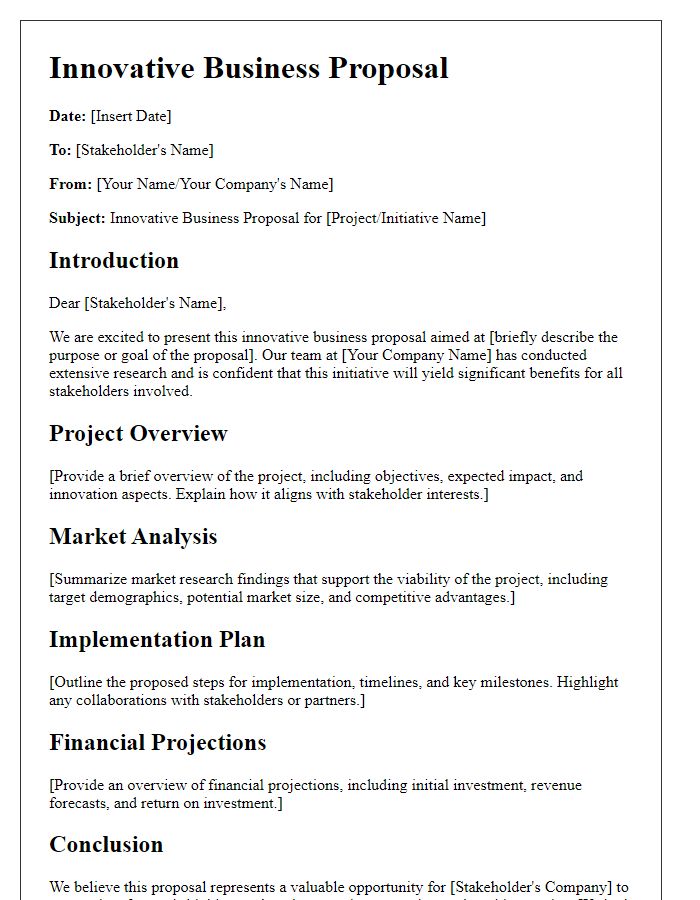
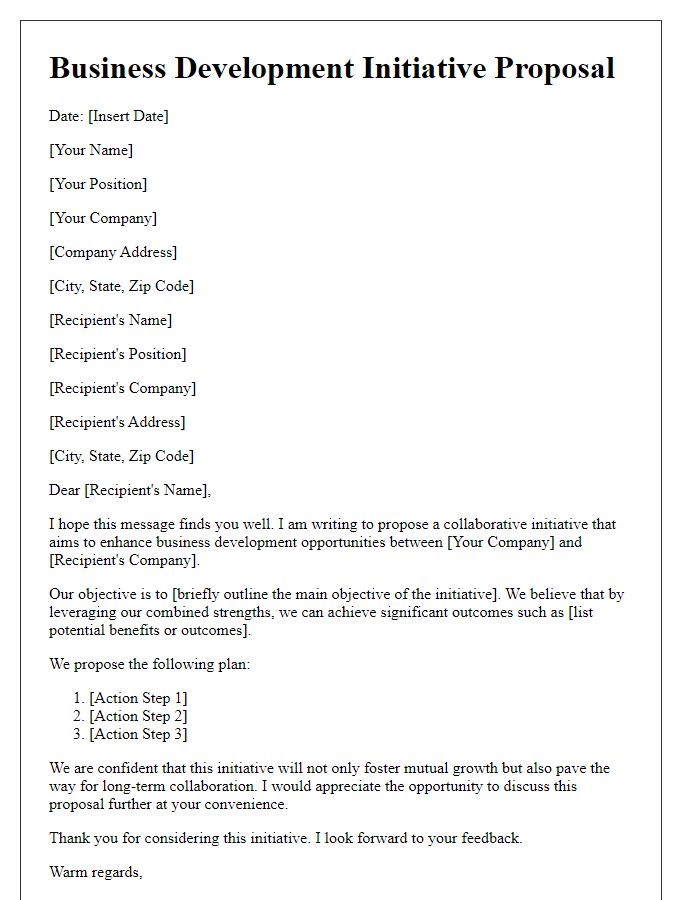
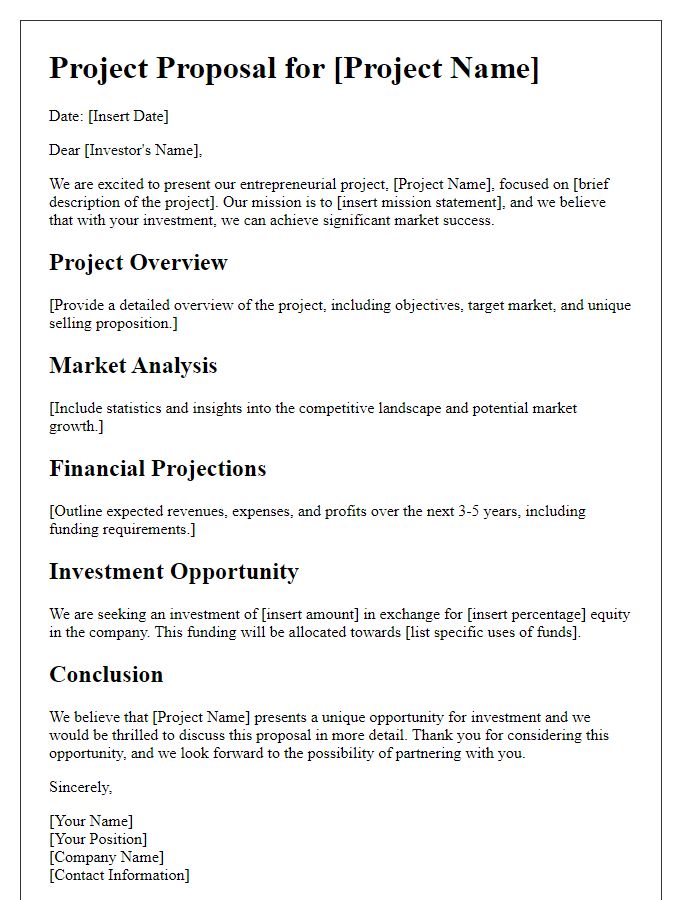
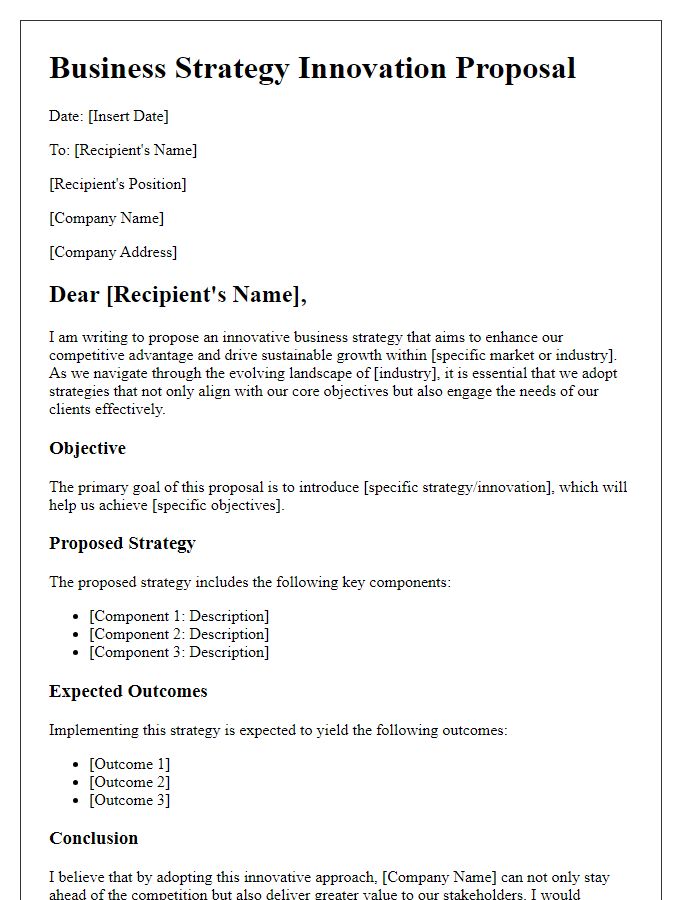
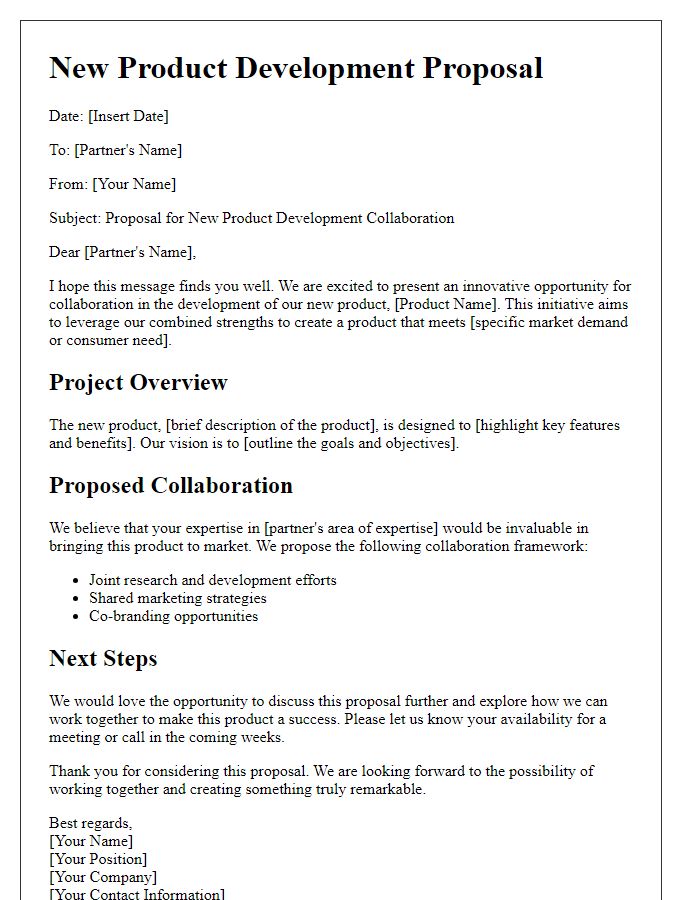
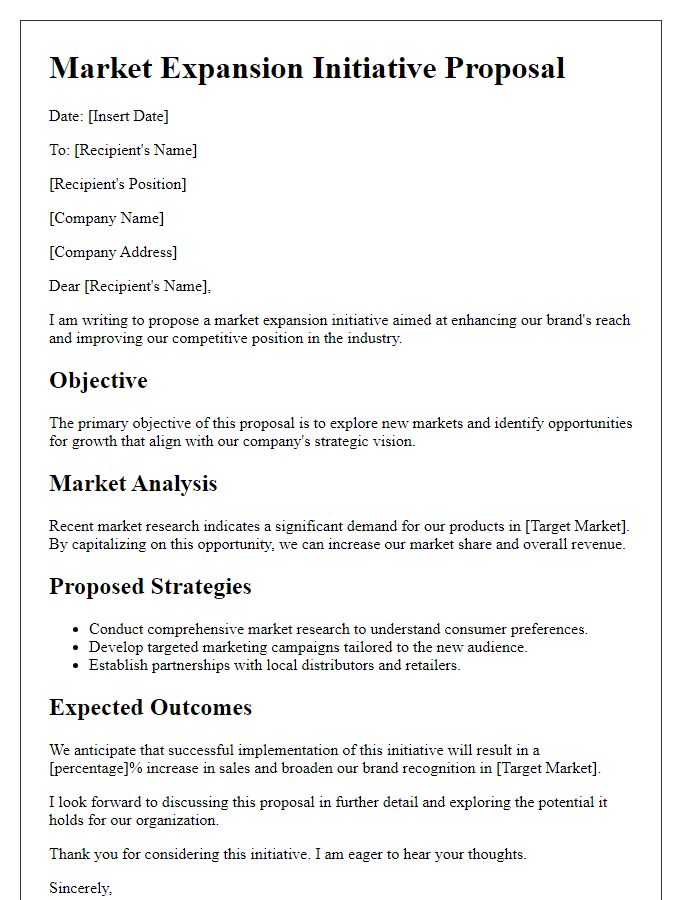
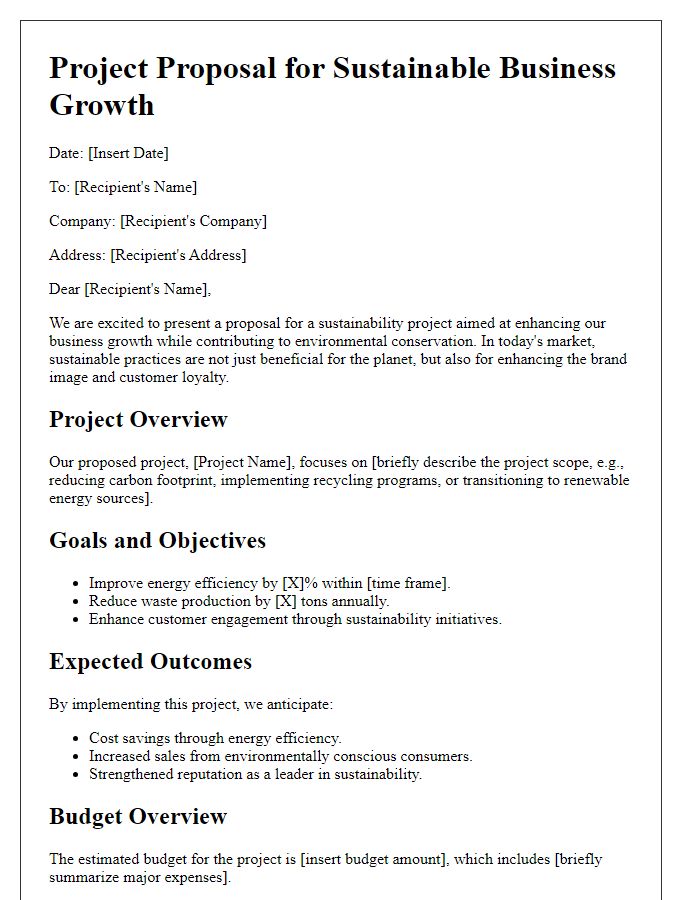
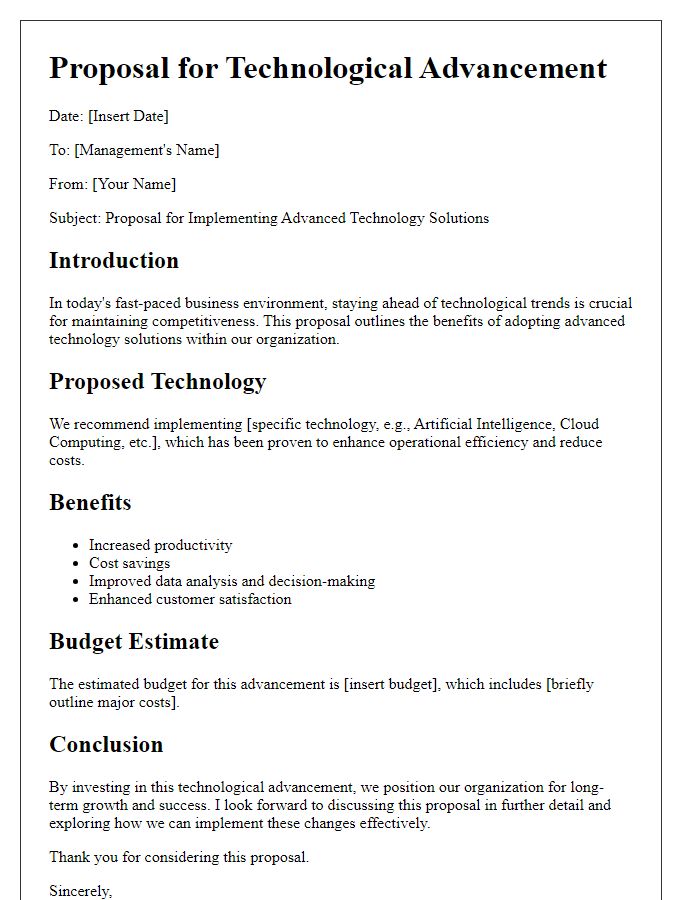
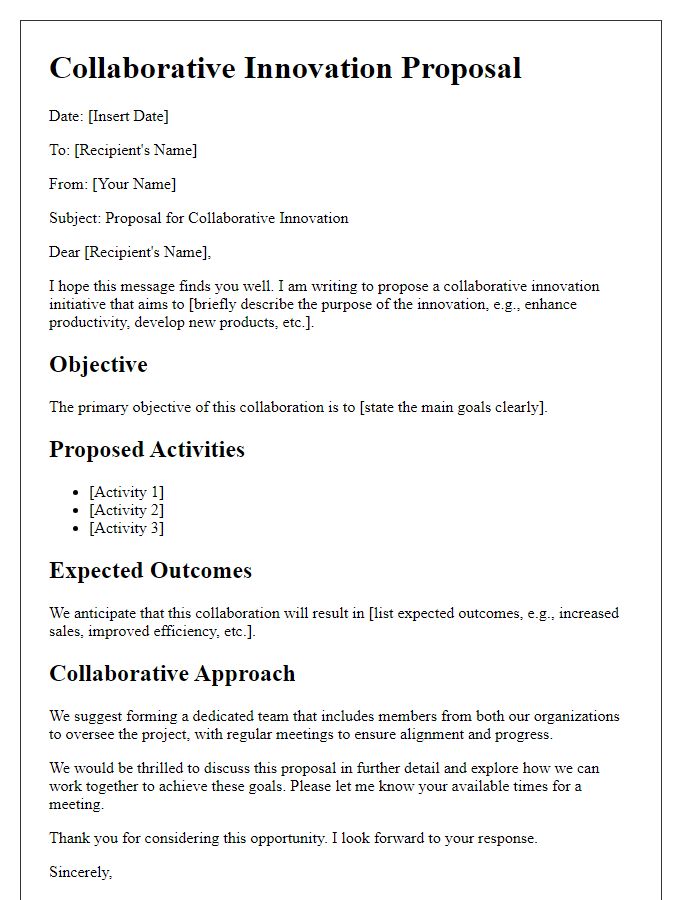
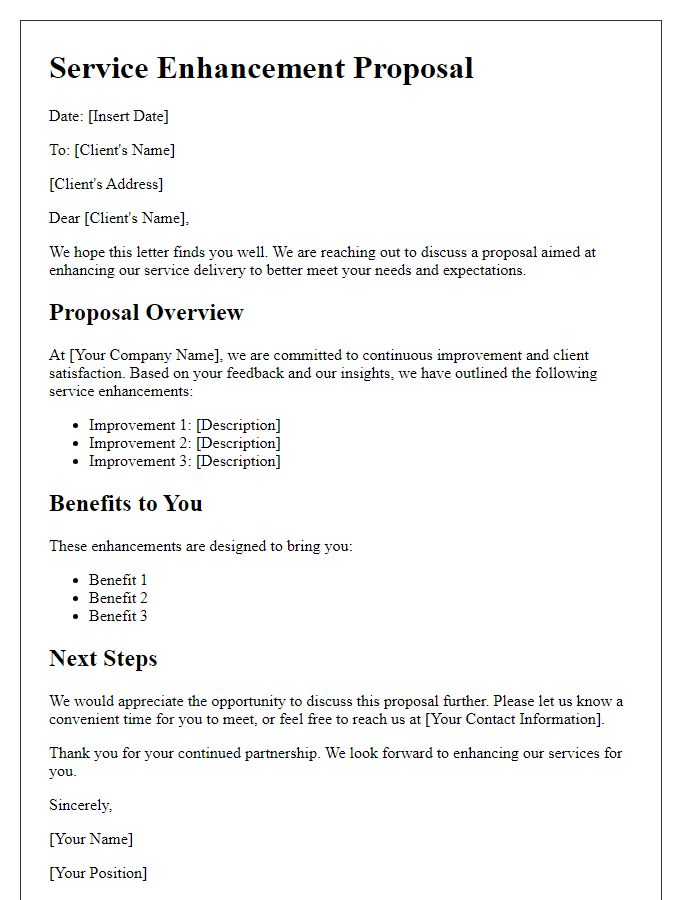




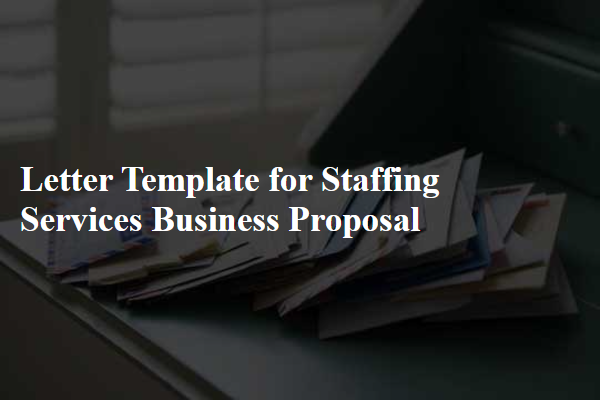
Comments